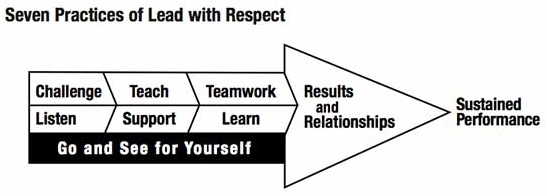I am a big fan of books written during the age of Scientific Management, the predecessor to Lean management. The books date from around 1880 through the 1930s. I have nearly 100 such books. These books help me understand the history and evolution of progressive management practices in industry. In particular, they clearly inform me what has changed over time and what has remained largely constant over time.
Recently, I acquired the first edition of a book titled Personal Leadership in Industry, written by David R. Craig and W.W. Charters. Published in 1925 by McGraw-Hill, it was one of the first books written on the subject of leadership in industry.
Professor Craig was a professor of personnel administration at the University of Pittsburgh, while Professor Charters was a professor of education at the University of Chicago. They studied the topic of leadership by interviewing “a large number of workmen and high administrative officials” to determine the difference between those leaders who are successful in supervising their subordinates and those who are not.
Their empirical study revealed dozens of findings helpful for all levels of managers. Comparing what Professors Craig and Charters wrote about leadership in 1925 to what we know about leadership today with yield some interesting findings with respect to what has remained constant over time.
Fast forward 89 years, and a book much talked about these days is Lead With Respect: A Novel of Lean Practice by Michael Ballé and Freddy Ballé. In their book, they present the following model for leading with respect, which they characterize as “the new standard”:
 You could easily construct the same model from the 1925 book by Craig and Charters. Craig and Charters offer essentially the same advice as Ballé and Ballé, though they use different names to characterize the seven practices of lead with respect (Go and See for Yourself, Challenge, Listen, Teaching, Support, Teamwork, and Learn). What does this tell us?
You could easily construct the same model from the 1925 book by Craig and Charters. Craig and Charters offer essentially the same advice as Ballé and Ballé, though they use different names to characterize the seven practices of lead with respect (Go and See for Yourself, Challenge, Listen, Teaching, Support, Teamwork, and Learn). What does this tell us?
It tells us this:
- The good leadership practices developed during the Scientific management (the old standard) era are the same as the good leadership practices of the Lean management era (the new standard). This consistency over time reflects the constancy of human nature and what constitutes effective human interaction.
- Lead with Respect, though a novel about leadership, is largely on-target and may thus be helpful to many people.
- There has been almost no progress in the understanding of leadership over a nearly 100 year period, as represented by these two books.
- Most leaders still lead in ways that are the opposite of what Personal Leadership in Industry and Lead With Respect advocate, suggesting that the behavioral approach to improving leadership is largely ineffective.
- The prospect for leaders applying the old or the new standard remain low.
Both Personal Leadership in Industry and Lead With Respect focus on telling what constitutes good leadership. But, what if instead of telling we studied the work of leaders at the genba, the same way that we study the work of the people who do value-creating work on the shop or office floor? In kaizen, we carefully study (observe) worker motion, for example, to find waste that can be eliminated. What if we carefully studied (observed) leaders’ work to find waste that can be eliminated?
We would certainly notice many of the behavioral problems identified in both Personal Leadership in Industry and Lead With Respect, but we could go further and make use of specific methods to eliminate behavioral waste. In addition, carefully looking at the detail of leaders’ work would reveal dozens of problems in every process that they participate in. Waste eliminating improvements could easily be made by applying the same Lean tools and methods used on the shop and office floor.
Personal Leadership in Industry (1925) and Lead With Respect (2014) contain necessary information but are not sufficient if one wishes to be a effective Lean leader. Either book would be a good start for today’s leaders to improve their understanding and practice of leadership. But, to actually eliminate waste in both leadership behaviors and leadership processes requires innovative concepts and methods that neither book offers. For that, you will have to go to Practical Lean Leadership and Speed Leadership.
It is in these two books that you will find what has changed over time, and how leadership has progressed over the last 100 years. This is the new new standard.
